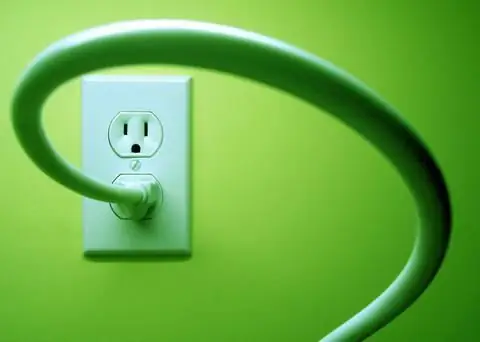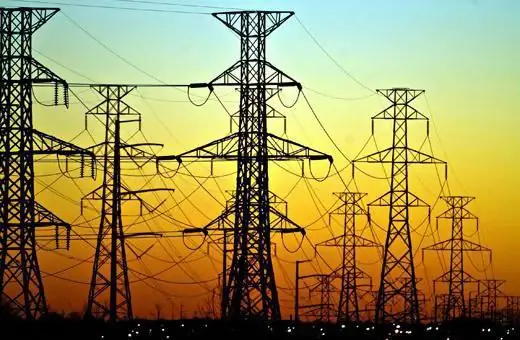2025 Author: Howard Calhoun | [email protected]. Last modified: 2025-01-24 13:10:47
In recent years, the electricity sector has undergone many changes. One of the key ones is the introduction of market mechanisms for the formation of the cost of supplies. Today there are so-called price categories of electricity consumers. 442 Government Decree of 04.05.2012 regulates supplies for different user groups.

Relevance of the issue
Why do we need price categories of electricity consumers? Previously, the regulated model operated in the economy. However, in the process of transition to a new economic system, the tariffs for organizations that were in force in the past began to be replaced by market prices. They are formed in accordance with wholesale supply and demand. As you know, these factors are subject to constant changes. Accordingly, the wholesale price of electricity is adjusted. This, in turn, is reflected in the cost of deliveries to end users.
Price categories of electricity consumers:definition
The new procedure for calculating the cost of supplies is effective from 1 Jan. 2012. Price categories of electricity consumers - basic tariff options. The final cost of deliveries to users depends on the group. The choice of the price category of electricity consumers is carried out by the entity itself. Previously, there were two tariffs - one- and two-rate. Currently, there are 6 price categories of electricity consumers. It depends on the group how the cost of capacity purchased by the supplier on the wholesale market is included in the final cost, what transmission tariff is included in it. In addition, by category, the consumer determines whether he needs to plan hourly consumption for the day.

Nuances
Before considering in detail the price categories of electricity consumers and how they differ, it should be said that the regulations provide for some restrictions. First of all, they concern entities using receiving devices whose power is more than 650 kW. These persons cannot choose the first and second categories. The fourth and sixth groups are available to users connected directly to generators or to FGC UES networks. You should also be aware that the consumer must select the category within a month from the date of publication of the tariffs. As a rule, the publication takes place at the end of December.
First group
In this category, the purchase price of capacity in the wholesale market is already included in the cost of electricity. In this connectionthe user pays for the entire amount received per month. There is one line on the delivery invoice. Electricity transmission is laid down at a one-part tariff. This group is available only to small users. The receiving devices must have a power of less than 670 kW. Calculations are made according to the volumes delivered per month. This category is used by most consumers.

Important moment
As mentioned above, the consumer must select a category within the time limit. Users who did not notify the supplier of the transition to another group will be billed according to the first one. If in the previous year deliveries were carried out within a different category, then it will automatically move to the next period. The only exception was for 2011/2012. During that period, users did not have metering devices, however, the calculation was made at a two-part tariff. Accordingly, for the first quarter of 2012, consumers were included in category 4. Let's say that the volume of deliveries per month is 1000 kWh. The tariff for the first category is 3.8 rubles. (without VAT). The total cost will be: 1000 x 3.8=3800 R.
Second option
In this category, power is also included in the electricity price. However, the bill shows two or three amounts. This will depend on the variant of the second category. The user can use two-zone (day/night) and three-zone (peak/semi-peak/night) calculation methods. The supply is accounted for at a one-part rate. This category is not available to consumers using hosteddevices with power over 670 kW.

Other groups
All price categories of electricity consumers, with the exception of 3 and 5, require an hourly calculation. In the account, therefore, there will be two lines. The first indicates the indicator for electricity, the second - for power. 3 and 5 price categories of electricity consumers involve charging every hour. Accordingly, hourly accounting of deliveries is necessary. The transfer tariff is one-part, both for the first and second groups. In the fifth category, consumers are required to plan hourly electricity use for the day ahead. In this case, deviations from the estimated volume are paid separately. They are included in the price. The fourth and sixth groups provide for hourly pay. The amount of power is calculated separately, as in categories 3 and 5. But the transfer is included in the price at a two-part rate. This means that the user pays a separate rate for the maintenance of networks, losses in them. In this case, the latter is included, as a rule, in the price of electricity. In the account, therefore, there will be three lines. The first indicates the indicator for electricity, the second and third - for the purchase and transmission capacity, respectively. The sixth group, like the fifth, assumes the obligation of the user to plan hourly use and pay for deviations that have occurred.
Price categories of electricity consumers: comparison
Before you understand which option is more suitable for the user, you should once againindicate that when the power of the receiving device is more than 670 kW, the subject can only carry out calculations for the third to sixth groups. To make the right choice, the consumer needs to answer the following questions:
- Which transmission rate would be the best?
- Does the business have the ability to accurately schedule hourly deliveries?

Let's find the answer to the first question. To understand which tariff will be more profitable for the enterprise, you need to compare the cost of two-rate consumption with the established single-rate one. If it turns out that it is more profitable to pay for the latter, then it is advisable to use 3 or 5 groups. If a two-part tariff is more attractive, then you should choose between the second and sixth categories.
Planning hourly deliveries
To determine this possibility, consider the following. The cost of the supplier for the third and fourth groups includes the sum of deviations of the actual hourly supply from the planned one by 5-7%. If the consumer believes that he can predict the volume more accurately, then the fifth or sixth category should be chosen. If there is no such confidence, then it is better to use the third or fourth groups. Experts recommend making calculations for several months or even for the whole year. This is due to the fact that during calculations it may turn out that in one period one category will be profitable, and in another, respectively, a completely different one.

Users with receivers less than 670kW
All six categories are available to these consumers. It is much more difficult for these users to understand which group is better than for those who have access to 3-6. Most consumers traditionally work with suppliers in the first category. The cost of deliveries is calculated directly by the service company and is presented as a single rate value. It can be used integrally. This means that you can multiply the volume of monthly consumption by the price calculated by the supplier and get the final cost of electricity. In other groups, the calculation is performed by intervals or by daily zones. The first is carried out by the hour and is used in 3-6 categories. Daily zones are provided in the second group. Here everything will depend on accounting devices.

If devices do not allow hourly readings, then only the first category will be available to the consumer. Without knowing the actual hourly volume, you cannot calculate the cost for other groups. If consumption is calculated by the hour, then the only way to determine which category will be more profitable is to calculate the cost of all available options.
Recommended:
How to pay for electricity via the Internet? Payment for electricity on a personal account via the Internet

After the Internet has firmly and closely merged into Russian reality, online financial transactions have ceased to be a unique product for an ordinary person. Online payment operations, even for an inexperienced PC user, are quite simple. In this article you can find detailed instructions on how you can pay for electricity using the Internet
How do they pay for electricity? Payment for electricity: how to transfer meter readings, calculate and pay?

How to pay for electricity correctly? What do the notorious "kilowatts" depend on? These burning questions sometimes require an immediate and accurate answer
Categories of pipelines. Determining the pipeline category. Classification of pipelines by categories and groups

Modern industry cannot do without quality pipelines. There are many types of them. What are the categories of pipelines, how to determine them, is described in the article
"Fix Price" - reviews. Fix Price - a chain of stores. Addresses of "Fix Price" stores

Often in an endless stream of cases, we do not have time to buy what we have long wanted, because we simply do not have enough time. After all, in order to go around all the specialized stores in search of a suitable thing, you need to allocate from your fully loaded day the hours you need to buy, and sometimes plan a whole day for this. Such inconvenience completely disappears when "Fix Price" appears in your life, the reviews of which speak for themselves
Guaranteed electricity supplier is List of electricity suppliers

SOE (Guaranteed Electricity Supplier) is a government-regulated energy retail company. She is obliged to conclude an agreement for the supply of energy with any applied consumer located in her service area

